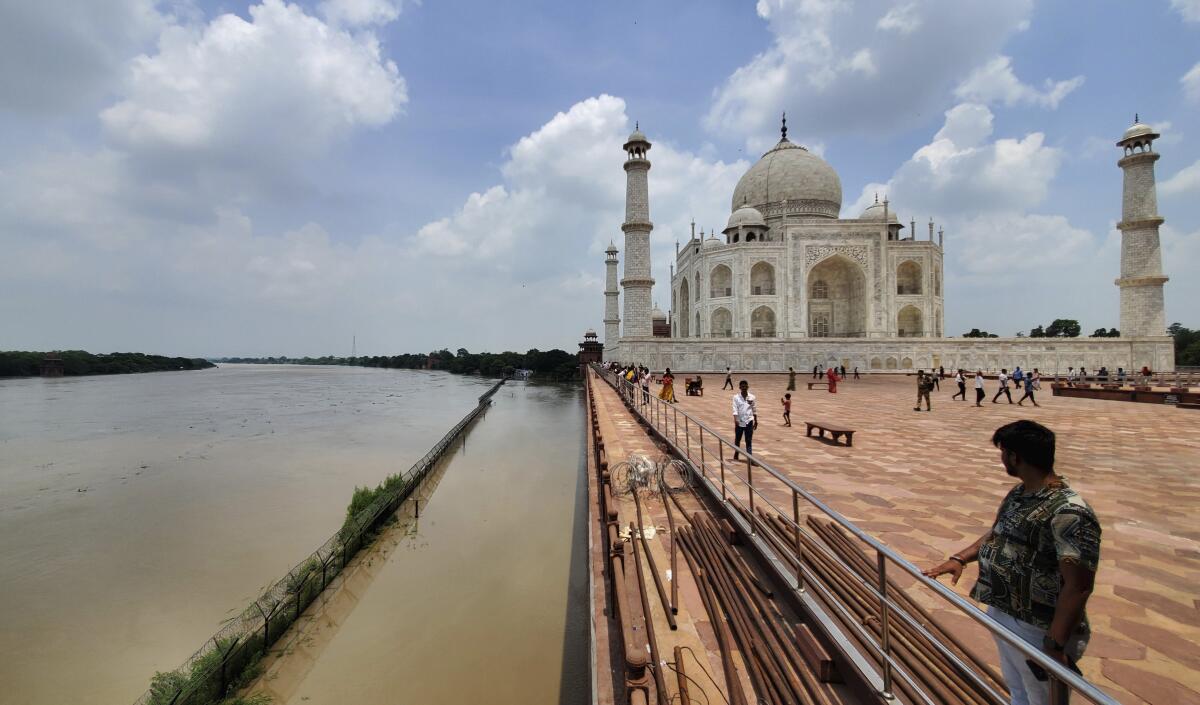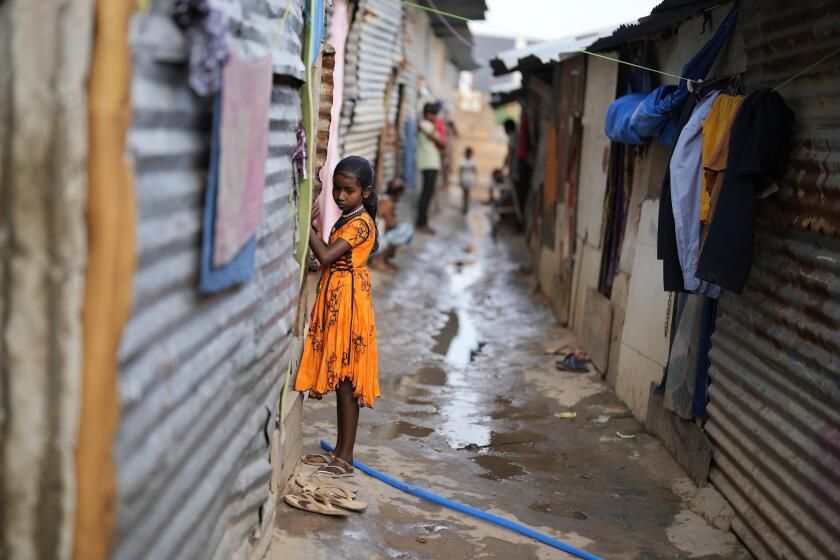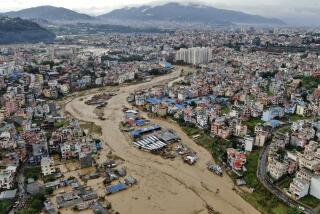Yamuna river reaches the Taj Mahal’s outer walls in India after swelling with monsoon rains

Rising water from the Yamuna river on Wednesday reached the outer boundary walls of the Taj Mahal and submerged one of its adjacent gardens after record monsoon rains swelled rivers across northern India over the last three weeks.
The flooding at the 17th century white marble monument in Agra city came as heavy floods had killed at least 100 people in parts of north India, swept away houses and bridges and resulted in deadly landslides.
On Wednesday, the red sandstone boundary walls of the Taj Mahal were surrounded by brown, muddy water, as a flock of tourists thronged the historic monument left untouched by the river. Water from the overflowing Yamuna, however, flooded some low-lying houses near the monument, prompting officials to move residents to safer places.
Local residents and officials said the river last touched the boundary walls of the monument in 2010.
In 1978 the floodwater seeped into the monument’s basement, but a recurrence of that is unlikely this time, officials said.
A spokesperson of the Archaeological Survey of India, which manages the Taj Mahal, said the increased water levels pose no threat to the iconic monument.
Prince Vajpayee, conservation assistant at the Taj Mahal, told the Press Trust of India news agency that the monument is built on a raised structure and the water did not pose any threat to it at the moment.
A flood in 2019 in an Indian state started Jerifa, her brother and their parents on a journey from their Himalayan village to a Bengaluru neighborhood.
The Taj Mahal, often called a monument to love, was built by Mughal Emperor Shah Jahan on the southern banks of the Yamuna in memory of his favorite wife, Mumtaz. The complex houses both of their graves, a mosque and the graves of other Mughal royalty.
The monument, acclaimed for its delicate latticework, is India’s biggest tourist draw, attracting millions of visitors every year.
More to Read
Sign up for Essential California
The most important California stories and recommendations in your inbox every morning.
You may occasionally receive promotional content from the Los Angeles Times.












